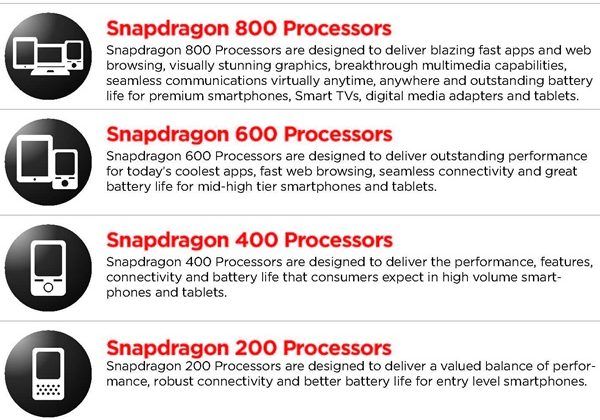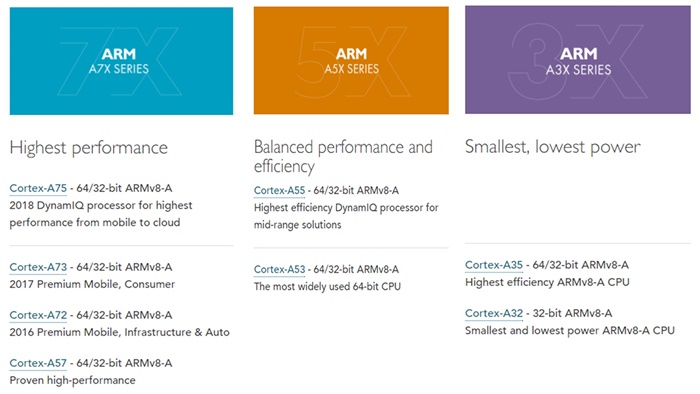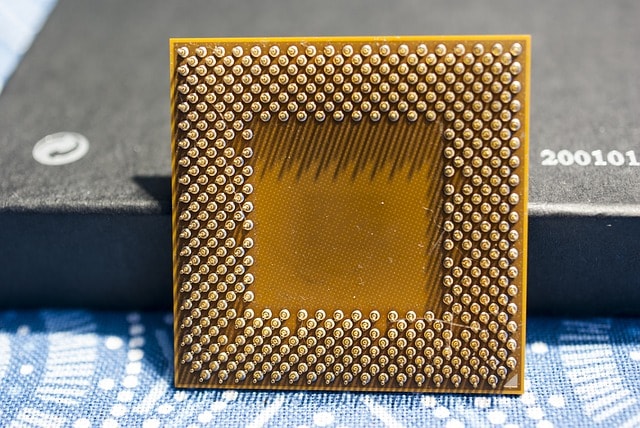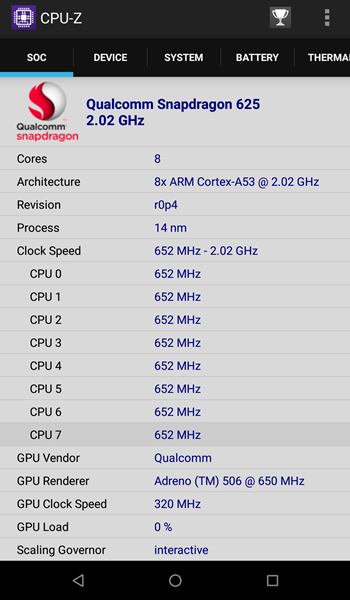Mobile Processors have improved a lot in recent years. The latest ones have more clock speed, more cores and come with advanced architecture and GPU.
Today, the manufacturers are working on processors with 5G connectivity and Artificial Intelligence (AI) capabilities. But I still know a lot of people who say Snapdragon is better than MediaTek but When I ask the reason, they give me a confused look as I asked something irrelevant.
Today, I am going to explain each and every specs and feature of Mobile System-on-chip (SoC) in the easiest way possible. I know there is enough content available on the Internet on Processors, but most of them sound too technical and a common user finds them difficult to understand.
Let’s have an example of Qualcomm Snapdragon 855 which is an octa-core processor built on 7nm technology and come with a clock speed of 2.84GHz and Adreno 640 GPU.
So, what are they? Let’s try to understand every specification of a Mobile SoC one by one.
Manufacturer
The first thing comes into the picture while looking for processor’s specs is the brand or the manufacturer’s name.
The most popular SoC manufacturers are Qualcomm’s Snapdragon, MediaTek’s (MT) or Helio, Samsung’s Exynos, Huawei’s Kirin and Apple’s A-Series.
All of these manufacturers design chipsets as per the requirement and budget. So, it’s not fair to compare them just by looking at their names. You should always compare the specs and features of processors rather than their popularity. It will help you make the right decision.
Model
The SoC manufacturers improve the product with every new version. Talking about Qualcomm, they have categorized their processors‘ series for different price-segment phones. You can see the image below for better knowledge. The Model number is just used to differentiate the series and processors.
ARM Architecture
Advanced RISC Machines (ARM) is a company who develops the CPU architecture for almost all the processor manufacturers. The Qualcomm, MediaTek, Samsung, Huawei and Apple all use ARM architecture to design their processors.
The ARM has also classified their architectures in different series. The manufacturers choose them by considering whether they are building a processor for high performance, medium-range or entry-level phones.
Talking about the mobile phones launched this year, most of them are equipped with a processor built on ARMv8-A architecture. It’s a 64-bit architecture used for processors to provide balanced performance with low power consumption.
You can check your processor’s architecture by installing CPU-Z on your Android device. Nowadays, the manufacturers also started using custom cores along with the ones provided by ARM. Qualcomm has used its own Kyro cores in all the flagship processors (SD 855, 845, 835). Similarly, Samsung used its custom core Mongoose in the latest Exynos 9820 and Apple’s Swift core in its latest processor.
Nanometer(nm) Technology
You have definitely noticed that one processor is built on 7nm technology while the other is on 14nm or more. Let me explain it to you in a very simple way.
Every processor is made up of a large number of transistors. These transistors are very small in size usually in Nanometers (nm). The smaller the size of a transistor, the more transistors can be embedded into the chip which ultimately increases its computing power.
If you don’t know, A transistor is like a switch with only two states – On and Off (1 or 0). All of this 7nm, 10nm, 14nm, 28nm, etc is scaling of the transistors with new fabrication technology. The smaller the size of the chips, lower the voltage required and hence uses less power.
Clock Speed
Clock speed is nothing but a number to represent how fast your processor is. It’s a rate at which your processor can execute a set of instruction. If you go in-depth, you will find things like pulses, oscillations, tempo, etc which may be difficult to understand for a non-technical person.
In simple words, just assume there’s a clock in every processor whose value keeps changing from 0..1..0..1. The more times it changes in a second, the faster your processor will be. It’s measured in terms of Hertz (GHz or MHz). Higher the clock speed, it processes the tasks faster and hence you will experience a lag-free smooth performance.
If you use your phone for longer duration like for browsing the Internet, editing videos, playing games, etc, a faster processor enables you to have a great experience. But here you should also know, the more the clock speed, the faster it processes the information, the more heat it will dissipate and ultimately consumes more power.
Cores
Cores are like the hands of a processor. Today, we have reached octa-core processors. In future, it will definitely increase to deca-core or more than that. But does having 8 cores in a processor really helps?
Well, it depends on the configuration of a processor. People usually think that a greater number of cores results in faster processing. But, that’s not true in all cases.
Suppose, You have eight hands and you need to complete a given task as fast as possible. You can easily assign all your hands in that work, but the limitation is speed. All your hands can’t do the work at the same speed. You may find four hands operating at a higher speed will finish the work while others remain unused.
The same happens with the processor also. Generally, manufacturers don’t allow all the cores to work at the same time. Some are reserved for an emergency while in a few cases, some cores can only be used if your device is rooted.
A multi-core processor can process a large amount of information at once. It usually divides the tasks among cores as per their efficiency and also overcomes their limitations like slow clock speed, heat dissipation, etc when needed.
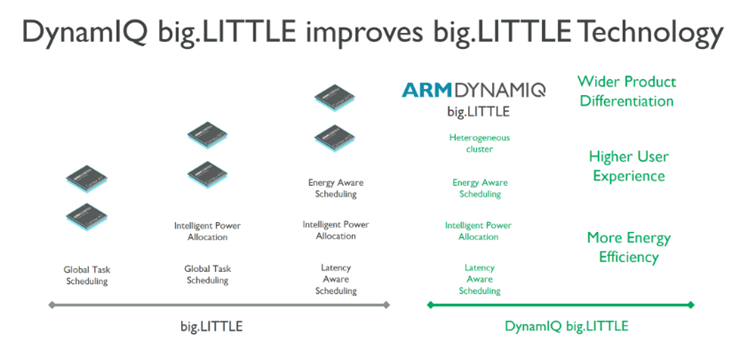
One thing, I would also like to mention here is – ARM’s DynamIQ big.LITTLE setup. To overcome the issue of power consumption, ARM has launched big.LITTLE which is further improved considering the future demands like 5G and AI and become DynamIQ big.LITTLE. Under this architecture, the manufacturers are now diving the cores into multiple clusters.
Let’s take the example of recently launched Snapdragon 855 which is also based on the above architecture. Here, the eight cores are divided into three clusters. The first cluster is having four small cortex A-55 cores for energy efficient tasks, the second cluster has three big Cortex A-76 cores for high-performance tasks and the third cluster one big prime Cortex-A76 core for an even heavier task.
Graphics Processing Unit (GPU)
Now, this is for all gamers who are excited enough to try each high-end game on their device. GPU or graphics processing unit takes care of all the graphics-related tasks. It helps in creating a 3D environment on a 2D display so that you can play games like PUBG, Gods Among Us, Asphalt, etc.
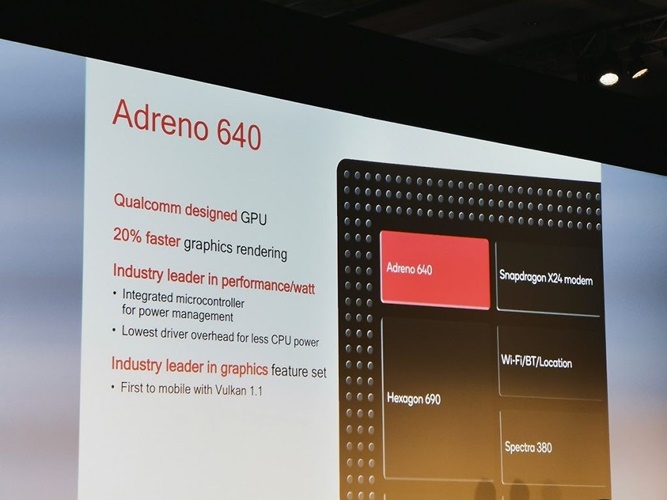
GPU generally reduces the load of CPU by handling all the graphics related tasks like accelerating image creation, colour and graphics production, etc. Qualcomm has its own GPU brand named Adreno which offers quite good performance. All the mobile SoC by Qualcomm comes with Adreno GPU. Talking about another manufacturer MediaTek, they use ARM’s Mali-GPU on most of their chips.
In most of the cases of GPU, the new release always brings better performance and improved battery life, If you want to test a GPU, just install and play some heavy games. Then, you can easily determine if a GPU is capable of doing your tasks or not.
Modem (4G, 4G VoLTE, 5G Connectivity)
Generally, mobile phone manufacturers don’t mention Modem details with processor name. So, you might haven’t seen it anywhere. I am only including it here to bust a common myth. I know some mobile users still try to make their 4G phone support 4G LTE by installing random apps.
Also Read: Qualcomm’s First mmWave 5G Antennas and Its Uses (Explained in Detail)
If you or any of your friends have also tried this – just remember that whether a smartphone will support 3G, 4G, 4G LTE or 5G, it completely depends on the modem supported by the SoC or processor. It’s a hardware thing which you cannot fix or change just by installing apps or tweaking settings. Taking an example of Snapdragon 855, it comes with X50 Modem for 5G connectivity and X24 Modem for 4G, 4G LTE and other bands.
Final Words
I hope you found the article helpful enough to clear all your confusion. I tried to explain every specs and feature in a simple manner, but if you still have any confusion, don’t hesitate to ask that in the comments section below. For learning more interesting things, stay tuned with Tech4Fresher.

